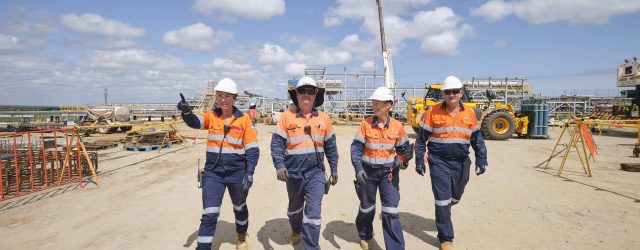Talk is over, time for action
Posted: 15th November 2023
Posted in: Blog

Posted: 15th November 2023
Posted in: Blog
Events like the Australian Financial Review Infrastructure Summit are an important opportunity to talk about how important it is for our country to keep building new infrastructure, make existing infrastructure more resilient and figure out the problems that come with it. But what happens when the talking is over?
It’s easy to get swept up in the discussions of what could be and become deterred by obstacles in our path, but reality demands a more pragmatic approach. If the coming years are indeed destined to be ‘the defining decade’, as declared by Treasurer Jim Chalmers, Australia needs more than just rhetoric; it needs a strategic, coordinated effort to lift its game, and there is no better place to focus than the construction industry.
The industry being relied upon to deliver the economic enabling infrastructure that will lift Australia’s game accounts for 33 per cent of all insolvencies. It is less productive than it was 30 years ago and has one of the highest suicide rates of any industry. Women make up only 13 per cent of the workforce that Infrastructure Australia last year estimated to be 214,000 workers short of what was needed to deliver the infrastructure projects in the pipeline.
So, who is responsible for finding a solution?
As it currently stands, Australia’s construction industry operates under the federal jurisdiction of multiple Ministers. There are different Ministers responsible for housing, new energy, defence and transport. There is a Minister for Finance responsible for the Commonwealth Procurement rules that govern how federally funded infrastructure projects, such as those undertaken by the Department of Defence, are brought to market and tenders assessed. There is the Minister for Workplace Relations that sets the rules around how construction workers can be employed and the rights of unions to represent them, and a Minister for Industry keen to improve Australia’s sovereign construction capability.
This lack of overall accountability for the Nation’s fourth largest industry, employing 10 per cent of the workforce and contributing 7-8 per cent of GDP, is compounded and repeated at a State and Territory level, where the main responsibility for delivering the nation’s infrastructure ultimately lies. Given this absence of an overall point of accountability or unifying forum to discuss and resolve industry issues, can we really be surprised that we find ourselves where we are today, debating the inflationary impact of the national infrastructure pipeline, the size of projects overruns and ultimately, which projects will have to be cancelled or deferred?
But that’s not the debate we should be having.
Australia is set to welcome over 500,000 migrants this year, so we can’t afford to cut back on building schools, hospitals and transport infrastructure. There’s also a housing crisis, so we’re being asked to build many more. On top of that, geopolitical risk is increasing so we can’t reduce spending on defence infrastructure. We’re also falling behind on our goals to reduce carbon emissions, so we need to rapidly increase our delivery of transmission lines and new energy projects. In short, there are few attractive options to cut back on investment in infrastructure which is why the 90-day review has turned into a 180-day-and-counting review.
Instead of kicking the can down the road to when the cost of constructing infrastructure, without intervention, will inevitably be considerably more than it is today, we should be debating how we can reduce the cost of procuring, delivering and maintaining infrastructure assets so that the inflationary impact of the project pipeline is minimised. We should be discussing how we can deliver these projects without the need for additional workers and how we can improve the culture of the industry so that worker mental health is improved and women are more equally represented.
So, after the Summit panel discussions and presentations have concluded, the focus needs to switch towards creating a National Construction Strategy. A’ Defining Decade’ needs an industry 10-year strategy that defines and addresses the industry’s problems. A strategy developed by government, industry and unions, spanning sectors and political boundaries. A strategy aimed at delivering the infrastructure Australia needs for a price that it can afford and maximising the value that it creates.
And so, the question remains: who will pull it all together?
A National Strategy, responding to a national problem can only be led nationally. Given the importance of the task at hand to the economy and the focus of the Treasurer on achieving a defining decade, the Treasury Department would appear to be an obvious home for such an initiative but that can be disputed, discussed and resolved.
What cannot be disputed is that the time for talking is over. It’s time for action!